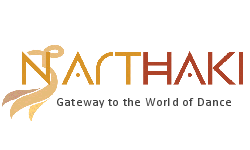
|
 |

|
 |
Ratikant Mohapatra: Evolution is an integral part of any living art form - Tapati Chowdhurie e-mail: tapatichow@yahoo.co.in Photos courtesy: Srjan April 8, 2025 Classical era or classical age is the period of European cultural history. Also 'classicism' was a term that referred to a style of music written in Europe about 1750 and 1830. Neo-classicism emerged as a Western cultural movement that drew inspiration from the art and culture of classical era of antiquity. In India, we use the word 'classical' to refer to our shastriya arts. In the Indian context the meaning of the term 'classical' has changed. We refer to our shastriya dance as 'classical dance'. By logic, the term 'Neo-classical' means a style that has been derived from the original. It is an intrinsic human quality to innovate. Dance today is not the same as it used to be before. It is the birth right of every artist to innovate. Whatever newness an artiste may give to his innovated dance form, he must keep in mind the audience to whom he is presenting his form. In the ultimate analysis, all innovated art have to prove the test of time. 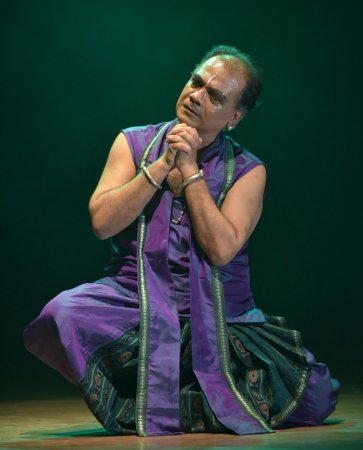 Ratikant Mohapatra In a brief interview, Guru Ratikant Mohapatra answered a few of my questions on neo-classical Odissi. Neo Classical Odissi and its evolution The vision for Neo-Classical Odissi stems from a profound respect for tradition and a quest to explore new creative dimensions within the dance form. While remaining deeply rooted in the rich heritage of classical/shastriya Odissi, it expands its artistic scope by refining movements, enriching expressions, and introducing innovative choreographic structures. By integrating unexplored elements from the Shastras, it enhances their relevance in present times. This evolution preserves the essence of Odissi while embracing fresh interpretations of rhythm, space, and storytelling. By exploring untapped possibilities within the traditional framework, Neo-Classical Odissi ensures that the dance remains vibrant, expressive, and ever evolving. The incorporation of fresh ideas into choreography, while maintaining its core grammar, exemplifies this approach, allowing it to resonate with audiences across generations. Redefining of movement and expression to cull out its identity. Neo Classical Odissi redefines movement by refining its kinetics, introducing intricate rhythmic patterns, and expanding the spatial dynamics of traditional choreography. While retaining the foundational grace and fluidity of Odissi, it explores sharper transitions, varied postures, and dynamic footwork to enhance visual impact and storytelling depth. Expression in Neo-Classical Odissi extends beyond conventional abhinaya, embracing a broader emotional range while maintaining the essence of bhava and rasa. It allows for deeper narrative explorations, making the portrayal of themes more immersive and evocative. In terms of purpose, Neo-Classical Odissi serves as a bridge between tradition and artistic innovation. It honours the classical framework while allowing for evolution in structure and presentation, ensuring the dance remains relevant and engaging. By carving its own distinct identity, it provides a platform for fresh interpretations while upholding the soul of Odissi. 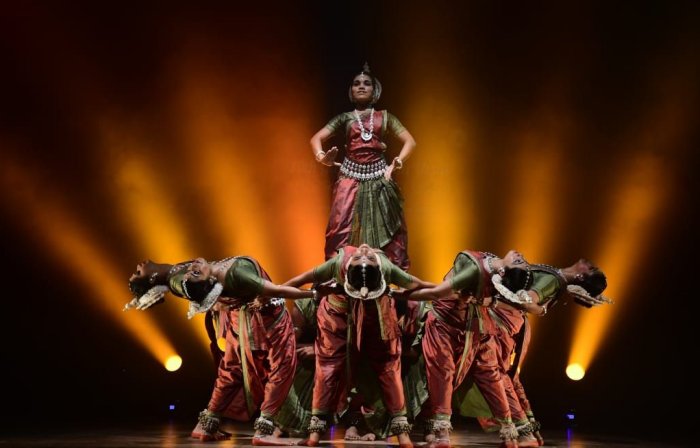 Srjan ensemble Conventions challenged to usher in a fresh creative process. My creative process is guided by a deep respect for tradition, an inquisitive mind, and an unceasing quest for artistic expression. Every choreography begins with a concept inspired by literature, music, philosophy, or a deeply personal experience. I immerse myself in research, exploring historical and aesthetic dimensions while ensuring that the soul of Odissi remains intact. Rhythm, movement, speed, and theme form the foundation of my artistic vision. I explore intricate tala patterns, spatial designs, and movement vocabulary, drawing from both unexplored elements of the Shastras and familiar, conventional themes embedded in collective memory. At the same time, I incorporate unconventional subjects to engage the mind in a compelling way, always striving to strike a balance between tradition and innovation. Music serves as a vital force, shaping the emotional depth and atmosphere of my compositions. Above all, I let intuition and artistic sensibility lead the way. I believe dance should evoke rasa (emotion) and leave a lasting impact on both the performer and the audience. If a choreography challenges conventions, it is not for the sake of defiance but to explore the infinite possibilities within the art form while honouring its essence. Navigating a delicate balance between innovation and tradition. Navigating the balance between innovation and tradition requires a deep understanding of both. For me, tradition is not a rigid boundary but a foundation - one that provides strength and direction while allowing space for artistic exploration. My approach is deeply rooted in respecting the essence of Odissi while continuously refining it through learning theory, understanding its scientific underpinnings, and developing structured methodologies to expand its expression. Innovation in my work is an organic process, not a result of forced experimentation or inherited knowledge applied rigidly. I immerse myself in the nuances of movement - both explored and unexplored - along with rhythm and storytelling, ensuring that every new element enriches rather than disrupts the classical fabric. Whether it involves reinterpreting a theme, introducing a new rhythmic structure, or reshaping spatial dynamics, each decision is made with a deep sense of responsibility to the art form, always remaining within the rightful framework of the Shastras. Ultimately, my goal is to allow Odissi to breathe, evolve, and remain relevant, without losing its soul. Tradition gives authenticity, while innovation keeps it alive - when approached with sensitivity and depth, they coexist in harmony. Your perspective on one of your recent choreographies which stirred a debate. Art, by its very nature, evokes emotions, interpretations, and sometimes, debate. One of my recent choreographies sparked significant discussion because it challenged preconceived notions of what Odissi should be. My intention was never to disrupt tradition but to explore the dance form's expressive potential while staying true to its essence. The controversy arose from a divergence in perspectives - some viewed the work as a bold artistic statement, while others saw it as a departure from convention. However, I believe that evolution is an integral part of any living art form. Odissi itself has undergone transformations over centuries, shaped by the vision of masters who dared to push boundaries while upholding its spirit. I chose not to react impulsively to the debate because art speaks for itself. True innovation often faces resistance before it finds acceptance. What matters most to me is that my work remains rooted in sincerity, scholarship, and a deep love for the tradition I have inherited. If it sparks dialogue, then perhaps it has already served its purpose - to make people think, question, and engage with the art form more deeply.  Srjan ensemble Your inspiration behind 'Madhu Sangeetam.' 'Madhu Sangeetam' was born from a desire to explore the lyrical and rhythmic essence of Odissi in a way that feels both immersive and transcendent. The inspiration came from the interplay of melody (sangeetam) and the intoxicating beauty of movement (madhu), where dance becomes an extension of music itself. I wanted to push the boundaries of how rhythm and melody interact in Odissi, allowing the dancer to embody the music rather than merely move to it. The choreography is woven around intricate rhythmic patterns, combined with unseen movements that merge different Karanas from the Shastras, flowing seamlessly with the melodic structure to create a visual symphony. At its core, 'Madhu Sangeetam' is an ode to rasa and sahitya, a profound exploration that delves deep into the heart of aesthetic experience. It is meant to transport both the dancer and the audience into a space, where sound and movement dissolve into pure expression. It was a bold experiment, not for the sake of innovation alone, but to deepen the sensory and emotional impact of Odissi while staying true to its spirit. What led to the unprecedented choice of using saxophone, a western instrument, in Odissi? Jeevana Madhu Sangeeta Maya is a completely experimental piece, both musically and in terms of movement, based on Odissi dance. The decision to integrate the saxophone was driven by a deep quest about how diverse musical textures could enhance the emotional and rhythmic depth of the dance. While the saxophone is traditionally associated with Western music, it has also been structurally adapted for Indian classical music, particularly for playing Carnatic ragas by the renowned Vidwan Kadri Gopalnath. Its tonal quality possesses a fluidity and expressiveness that beautifully complements the lyrical nature of Indian classical dance. Thus, the saxophone was incorporated into my choreography Jeevana Madhu Sangeeta Maya to create a seamless synthesis of sangeeta, sahitya, nritya, and vadya. My intention was not to introduce something foreign for the sake of novelty, but to explore how an instrument with a distinct voice could blend seamlessly into the soundscape of this dance piece. The human-like timbre of the saxophone allows for a unique emotional layering, complementing the subtle nuances of the movements and abhinaya. The integration of the saxophone in Jeevana Madhu Sangeeta Maya is a nuanced artistic choice that merits a dedicated discussion. Exploring its tonal alignment with the rasa of the composition, its fusion with Odissi's rhythmic patterns, and its overall impact on the dance's aesthetic requires both depth and time. To truly do justice to this subject, I propose a separate session where I look forward to an immersive exchange that delves into the creative and technical intricacies of this unique fusion. Music has always evolved through interactions across cultures, and I see this experiment as a way to expand the auditory experience of this dance form without diluting its essence. The saxophone, when used thoughtfully within the framework of rhythm and melody in dance, became an extension of the dancer's breath - bridging tradition with a fresh artistic perspective. 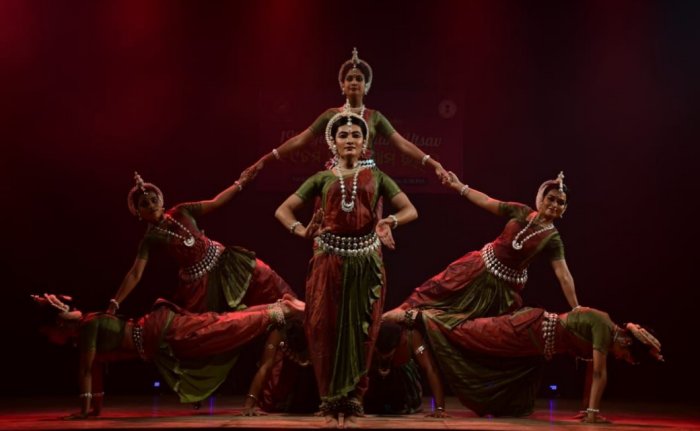 Srjan ensemble How are the creations of new movements approached to redefine Odissi's kinesthetics? The creation of new movement dynamics in Odissi is a process that demands both deep introspection and rigorous scholarship. It begins with an immersion in the fundamental grammar of the dance - its shastric foundations, postures, transitions, and intricate rhythmic structures. Odissi, like any classical form, carries within it a vast reservoir of untapped potential, and I believe that meaningful innovation must emerge from within this wellspring rather than being imposed externally. My approach is rooted in a synthesis of meticulous research and intuitive exploration. Each movement is first deconstructed to understand its intrinsic logic, energy flow, and emotional weight. I examine how movements are connected - how the transitions unfold, how energy travels through the body, and how rhythm dictates momentum. By refining spatial patterns, experimenting with tempo, and recalibrating weight distribution, I seek to enhance the expressiveness of the form while maintaining its inherent identity. Beyond structural exploration, inspiration comes from varied sources - the undulating grace of nature, the sculptural elegance of temple carvings, the rhythmic cadence of poetry, and the depths of human emotion. Each of these elements informs my choreographic process, breathing new life into the dance without distorting its essence. For me, movement is not merely a technical construct but a living entity - one that embodies rasa (emotive essence) and creates an unbroken dialogue between the dancer and the dance. Every new dynamic I introduce undergoes a process of refinement, ensuring that it resonates with Odissi's aesthetic principles while expanding its expressive horizon. The challenge is not just to innovate, but to do so with an awareness of history, an understanding of form, and a commitment to artistic integrity. You wear many hats - educator, administrator who constantly pushes artistic boundaries… Balancing the roles of an artiste, educator, and administrator is a continuous process of discipline, passion, and purpose. Each role feeds into the other, creating a dynamic cycle of learning, teaching, and creating. As an artiste, my primary commitment is to the integrity of Odissi, constantly pushing its expressive boundaries while staying rooted in tradition. This artistic exploration enriches my role as an educator, where I guide students not just in technique but in understanding the depth of the art form. Teaching, in turn, refines my own perspectives and keeps me connected to the evolving needs of young dancers. Administrative responsibilities, particularly as the Dean of FACIS at Sri Sri University and as the head of Srjan, require strategic thinking and organizational vision. I view this as an extension of my artistic journey - creating structures that nurture future generations of artistes and scholars. Time management and unwavering dedication are key. I prioritize my commitments, ensuring that none overshadow the other, and most importantly, I remain deeply connected to my purpose. Whether performing, teaching, or leading, my ultimate goal remains the same - to serve and elevate the art of Odissi. 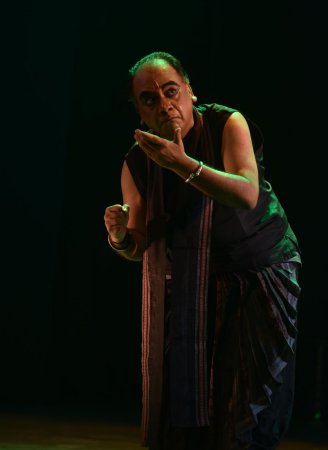 Ratikant Mohapatra Your future plans? My future plans with Odissi revolve around preserving its purity while exploring its artistic possibilities to ensure its continued evolution and global reach. One of my key focuses is on nurturing the next generation of dancers through rigorous training and mentorship, ensuring they not only master technique but also develop a deep understanding of the philosophy and aesthetics of Odissi. Through Srjan, I aim to create more structured learning modules, archives, and interactive platforms that make Odissi more accessible to students worldwide. Choreographically, I intend to further experiment with movement vocabulary, rhythmic intricacies, and thematic storytelling - pushing the expressive limits of Odissi while staying true to its essence. I also wish to collaborate with diverse artistic disciplines, exploring how Odissi can interact with different musical and visual elements in meaningful ways. Additionally, my role as an educator and administrator allows me to contribute to academic research and documentation, ensuring that Odissi is studied, analyzed, and presented with the depth it deserves. Ultimately, my goal is to uphold the legacy of my father, Guru Kelucharan Mohapatra, while carving new pathways that keep Odissi vibrant, relevant, and ever inspiring for future generations. Dance and music are like vast oceans. Swimming at the shore, where small waves gently touch you, is easy - anyone can do it. But to truly understand the depth of an art form, one must dive deep, venturing far into the sea. Immersing oneself fully, reaching down to touch the ocean floor, and emerging with a pearl requires immense struggle, perseverance, and dedication. Only then does an artiste truly begin to grasp the essence of their craft. This journey of discovery, achievement, and learning continues until an artiste takes their last breath. It is this endless pursuit of artistic depth and truth that I strive to embody and pass on to future generations.  Tapati Chowdhurie trained under Guru Gopinath in Madras and was briefly with International Centre for Kathakali in New Delhi. Presently, she is a freelance writer on the performing arts. She is the author of 'Guru Gopinath: The Making of a Legend.' Post your comments Please provide your name and email id when you use the Anonymous / blog profiles to post a comment. All appropriate comments posted with name and email id in the blog will be featured in the site. |